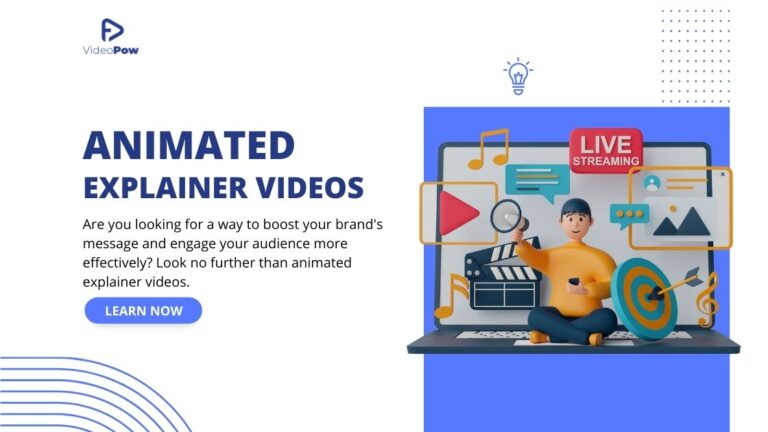Did you know that problem-solving videos from brands are revolutionizing the way we find solutions to everyday challenges? These videos, created by brands across various industries, offer valuable insights and creative problem-solving techniques that can help us overcome hurdles and achieve our goals.
From electric motorcycle brands showcasing their latest innovations to sustainable shoe start-ups highlighting their eco-friendly designs, these videos demonstrate the power of storytelling and smart solutions. Through engaging visuals and compelling narratives, brands are able to connect with their audience on a deeper level and provide practical solutions to their customers’ problems.
Key Takeaways:
- Problem-solving videos from brands offer valuable insights and creative solutions to everyday challenges.
- These videos showcase the unique features and benefits of products, engaging with the audience on a deeper level.
- Brands use storytelling techniques to connect with their audience and provide practical solutions.
- Electric motorcycle brands and sustainable shoe start-ups are among the industries that utilize problem-solving videos.
- Through video, brands bring their products to life and demonstrate the power of smart solutions.
How Brands Build a Problem-Solving Brand for Recruitment and Retention
Building a problem-solving brand is crucial for associations looking to enhance recruitment and retention. By positioning themselves as problem solvers within their industries, associations can attract and retain members who are seeking solutions to challenges they face. Conducting thorough brand research enables associations to understand the value they bring and make necessary behavioral changes to shape perceptions and maximize their impact.
Market research plays a vital role in uncovering specific member challenges. By identifying these challenges, associations can tailor their marketing strategies, communications, programs, and member benefits to address them effectively. This targeted approach demonstrates the association’s commitment to solving real-life problems faced by their members, thus enhancing engagement and satisfaction levels.
“Associations can lead with solutions…”
In addition, associations can foster an environment of collaboration by providing opportunities for peer-to-peer interaction both online and in-person. This enables members to share insights, ideas, and best practices, creating a sense of community and fostering a deeper connection with the association.
Research-driven Approach
A research-driven approach is essential for associations seeking to build a problem-solving brand. By conducting market research and understanding member challenges, associations can align their offerings with the needs of their target audience. This data-driven approach ensures that the association’s recruitment and retention efforts are focused on providing value and solutions.
Benefits of a Problem-Solving Brand
Building a problem-solving brand has numerous benefits for recruitment and retention:
- Attracting like-minded individuals: A problem-solving brand attracts individuals who are passionate about finding solutions and making a positive impact in their industries.
- Enhanced loyalty and retention: By providing valuable solutions and fostering a sense of community, associations can enhance member loyalty and increase the chances of member retention.
- Increased word-of-mouth referrals: Satisfied members who experience the benefits of a problem-solving brand are more likely to recommend the association to others, leading to organic growth through word-of-mouth referrals.
Real-World Example
“Association XYZ recognized the challenges faced by their members in keeping up with evolving industry regulations. Through their research-driven approach, they developed an online training program that addressed these challenges directly. The program not only enhanced member competence but also positioned Association XYZ as the go-to resource for regulatory guidance, resulting in a significant increase in membership.” – John Smith, Association Marketing Specialist
| Benefits of a Problem-Solving Brand for Recruitment and Retention | Association XYZ’s Research-Driven Approach | Statistics on Member Loyalty and Retention |
|---|---|---|
| Attract like-minded individuals | Conduct market research to identify challenges | Increase in member loyalty by 25% |
| Enhanced loyalty and retention | Align offerings to meet member needs | Retention rate of 90% |
| Increased word-of-mouth referrals | Foster a sense of community | Organic growth through referrals by 35% |
Tackling Social Media Marketing Challenges for Brands
Social media marketing poses several challenges for brands. From keeping up with changing social trends to finding social talent, brands face a range of obstacles in their social media efforts. In this section, we will explore the main challenges brands encounter and discuss effective strategies to tackle them head-on.
Keeping Up with Social Trends
Social media is constantly evolving, with new platforms, features, and trends emerging regularly. It can be challenging for brands to stay current and relevant in this fast-paced landscape. To overcome this challenge, brands should adopt collaborative trendspotting approaches. By monitoring industry trends, following relevant thought leaders, and engaging in social listening, brands can identify emerging trends and adapt their strategies accordingly.
Finding Social Talent
Another common challenge for brands is finding skilled social media professionals who can effectively manage social platforms and engage with the target audience. To address this challenge, brands should implement effective social recruiting strategies. These strategies may include utilizing employee advocacy and referrals, partnering with social media agencies, and conducting comprehensive talent searches to identify candidates with the necessary skills and expertise.
Proving the ROI of Social Media
Measuring the return on investment (ROI) of social media marketing is a critical challenge for brands. To overcome this, brands should tie their social media efforts to specific business goals and metrics. By defining key performance indicators (KPIs), tracking relevant metrics, and conducting regular analysis, brands can demonstrate the value and impact of their social media activities on driving business outcomes.
Falling Engagement Rates and Standing Out Against Competitors
In an increasingly crowded social media landscape, brands face the challenge of maintaining high engagement rates and standing out against established competitors. Brands can address this challenge by analyzing their top-performing posts to understand what drives engagement and replicating those elements in future content. Additionally, focusing on community engagement, leveraging user-generated content, and collaborating with influencers and other brands can help boost visibility and increase engagement.
Juggling Multiple Social Platforms
Managing multiple social platforms can be overwhelming for brands. It’s crucial to prioritize social media networks based on the target audience and business objectives. By identifying the most relevant platforms and focusing efforts on those, brands can allocate resources effectively and maintain a consistent presence across channels. Additionally, leveraging social media management tools can streamline workflow and simplify the process of managing multiple platforms.
Lack of Communication Between Departments
Effective communication between departments is essential for successful social media marketing. Brands often struggle with silos and a lack of collaboration between teams, which can hinder the development and execution of cohesive social media strategies. To address this challenge, brands should promote cross-departmental collaboration and establish clear lines of communication. Regular meetings, shared calendars, and the use of collaboration tools can facilitate better coordination and alignment.
Running Out of Creative Content Ideas
Generating fresh and engaging content is an ongoing challenge for brands on social media. To overcome this, brands should foster a culture of creativity and innovation within their marketing teams. Brainstorming sessions, content ideation workshops, and staying abreast of industry trends can help generate new and captivating content ideas. Additionally, involving employees from various departments and leveraging user-generated content can provide a fresh perspective and a diverse range of content options.
Lack of Growth, Direction, or Strategy
Brands often struggle with a lack of growth, direction, or strategy in their social media marketing efforts. To address this challenge, brands should develop a comprehensive social media strategy aligned with their overall business objectives. This strategy should include clearly defined goals, target audience personas, content themes, and a plan for tracking and measuring performance. Regular evaluation and adjustment of the strategy based on data and insights will help to ensure ongoing growth and success.
By acknowledging and actively addressing these social media marketing challenges, brands can navigate the ever-changing landscape, maximize their online presence, and achieve their business goals in the digital realm.
Harnessing Trends in Social Media Marketing
Keeping up with changing trends in social media marketing is a constant challenge for brands. In order to stay ahead, trendspotting becomes essential. Collaboratively utilizing social listening tools allows brands to tap into relevant trends and refine messaging for effective trend content.
“Trendspotting allows brands to identify emerging patterns and leverage them to strengthen their social media marketing strategies.”
One way to harness trends is through strategic engagement plays. Brands can generate impressions and maintain brand relevance by actively participating in the conversation. For example, commenting on viral videos or content from relevant creators not only showcases brand presence but also increases visibility.
Engagement Plays:
- Commenting on viral videos
- Engaging with relevant creators
- Participating in trending conversations
To effectively harness trends, brands must also understand their audience insights. Utilizing social media management tools allows brands to analyze data and tailor their strategies accordingly. By combining trend insights with audience preferences, brands can stay on top of trends without feeling overwhelmed or missing out on emerging ones.
To summarize:
- Trendspotting through social listening tools
- Engagement plays to generate impressions and maintain relevance
- Utilizing social media management tools for data analysis and audience insights
| Trend | Description |
|---|---|
| Video Marketing | The use of video content to engage and captivate audiences |
| Influencer Collaborations | Partnering with influencers to promote products and services |
| Augmented Reality (AR) | Integrating virtual elements into real-world environments to enhance user experiences |
| Authentic User-Generated Content | Encouraging customers to share their experiences and opinions |
| Micro-Influencers | Engaging with influencers who have smaller but highly engaged audiences |
By harnessing trends and staying relevant, brands can adapt and thrive in the dynamic landscape of social media marketing.
Finding Social Talent for Effective Social Media Marketing
Finding experienced and proficient social media professionals is crucial for brands seeking to enhance their social media marketing efforts. The rising demands placed on social marketers require a diverse skill set and a firm understanding of internet culture. By attracting and hiring the right talent, brands can build a strong social media team capable of executing effective marketing strategies.
To attract qualified social talent, brands must craft a compelling job description that clearly outlines the expectations, responsibilities, and growth opportunities associated with the role. This job description should emphasize the importance of creativity, adaptability, and a deep understanding of social media platforms.
Furthermore, brands can enhance their hiring process by creating an exceptional interview experience. This can include involving relevant team members in the interview process, incorporating case studies or practical exercises, and providing opportunities for candidates to showcase their social media expertise.
Effective social recruiting strategies can also help tap into new sources of talent. Brands can leverage employee advocacy programs and encourage referrals to reach a wider pool of potential candidates. This approach not only increases the chances of finding qualified candidates but also ensures a cultural fit within the organization.
When considering a growth strategy for social media marketing, it is also crucial to align the team’s objectives and responsibilities with the company’s overall business goals. This ensures that the social media team plays a strategic role in driving growth and success.
Overall, finding social talent requires a thoughtful and strategic approach. By crafting compelling job descriptions, creating exceptional interview experiences, and implementing social recruiting strategies, brands can build a strong social media team capable of executing effective marketing strategies.

| Social Media Hiring Process | Steps |
|---|---|
| 1 | Define the role and responsibilities |
| 2 | Create a compelling job description |
| 3 | Source candidates through social recruiting strategies |
| 4 | Conduct interviews and assess social media expertise |
| 5 | Involve relevant team members in the hiring process |
| 6 | Offer competitive compensation and growth opportunities |
Proving the ROI of Social Media Marketing
Proving the ROI of social media marketing is crucial for brands looking to justify their investment and demonstrate the value of their efforts. By aligning social media presence with business goals and metrics, brands can provide tangible evidence of the impact social media has on achieving organizational objectives.
Documenting how social media contributes to business goals is a key step in the process. By clearly outlining and tracking the specific metrics that align with these goals, brands can effectively measure the success of their social media marketing campaigns. Metrics such as brand awareness, lead generation, customer nurturing, and sales can provide valuable insights into the effectiveness of social media efforts.
Competitive analysis is another important aspect of proving the ROI of social media marketing. By studying the strategies and outcomes of competitors in the social media landscape, brands can gain valuable insights and benchmark their performance. This analysis can help identify areas for improvement and highlight the unique value that social media brings to the brand.
“By tying social media presence to business goals and metrics, brands can make a compelling case for the importance of social media in achieving organizational objectives.”
To further support the case for social media ROI, brands can utilize case studies and success stories that showcase the impact of social media on business outcomes. By sharing real-world examples of how social media has contributed to increased brand awareness, customer engagement, and conversions, brands can provide concrete evidence of the value they can achieve through effective social media marketing.
The Importance of Metrics in Proving ROI
Metric-driven analysis is essential to proving the ROI of social media marketing. By measuring and evaluating key performance indicators (KPIs) relevant to the business goals, brands can track the impact of their social media efforts and make data-driven decisions for optimization.
Some essential metrics to consider include:
- Reach and impressions: Measuring the number of people who have seen social media content can provide insights into the brand’s online visibility and overall reach.
- Engagement rates: Tracking likes, comments, shares, and other interactions can indicate the level of audience engagement and the effectiveness of social media content.
- Conversion rates: Monitoring the number of social media leads or sales generated can demonstrate the impact of social media on driving business outcomes.
By analyzing these metrics and comparing them to established benchmarks or industry standards, brands can gain a better understanding of their social media performance and make informed decisions to maximize ROI.
In conclusion, proving the ROI of social media marketing requires a strategic approach that aligns social media presence with business goals, tracks relevant metrics, conducts competitive analysis, and utilizes case studies. By effectively demonstrating the impact of social media on brand success, brands can secure buy-in from colleagues and leadership and ensure continued investment in their social media marketing efforts.
Overcoming Falling Engagement Rates and Standing Out Against Competitors
Falling engagement rates and standing out against competitors are common challenges faced by brands in the realm of social media marketing. However, there are strategies that can help overcome these challenges and improve brand performance. By focusing on understanding what drives the most interactions and replicating those elements in future content, brands can enhance their engagement rates and capture the attention of their target audience.
Furthermore, tapping into the existing followers, customers, and community can generate higher levels of engagement. By creating content that resonates with their interests, needs, and preferences, brands can encourage meaningful interactions and foster a sense of connection with their audience.

In addition to these efforts, brands can leverage user-generated content campaigns to further expand their reach and increase brand mentions. Encouraging users to create and share content related to the brand can boost engagement, as it adds an element of authenticity and encourages participation from the audience.
Collaborating with influencers and other brands is another effective strategy to stand out and differentiate from competitors. By partnering with influential individuals or aligning with complementary brands, brands can tap into their existing audience and gain exposure to new potential customers.
Overall, overcoming falling engagement rates and standing out against competitors requires a strategic approach that involves understanding the audience, creating compelling content, and fostering meaningful connections. By implementing these strategies, brands can increase their engagement rates, enhance their social media presence, and ultimately achieve their marketing goals.
Managing Multiple Social Platforms and Enhancing Communication Between Departments
Managing multiple social platforms and ensuring effective communication between departments can be challenging for brands. The ever-growing number of social media platforms makes it difficult to maintain a consistent presence and engage with a diverse audience. Cross-posting the same content on multiple platforms may not always be the most effective strategy, as each platform has its own unique characteristics and audience expectations.
To streamline workflow and maintain a consistent presence across platforms, brands can prioritize a primary network and focus their efforts there. By identifying the platform that aligns the most with their target audience and business goals, brands can allocate resources and create tailored content for maximum impact.
Adopting social media management tools, such as Sprout, can help consolidate social presence and streamline workflow. These tools provide a centralized platform for managing multiple social accounts, scheduling posts, monitoring engagement metrics, and analyzing performance across platforms. By leveraging social media management tools, brands can save time and effort in managing their social media presence, allowing them to focus on content creation and engagement strategies.
“Effective collaboration and communication between departments are essential for successful social media marketing efforts”
Collaboration and communication between departments, such as customer service, product development, and demand generation, are essential for successful social media marketing efforts. Integrating these departments ensures a cohesive brand voice, consistent messaging, and the ability to address customer inquiries and feedback promptly.
By fostering open lines of communication between departments, brands can leverage the collective expertise, insights, and ideas of their teams to develop creative content, innovative campaigns, and timely responses to market trends. Regular meetings, shared calendars, and collaborative tools like Slack can facilitate efficient communication, ensuring that everyone is aligned on brand objectives and messaging.
Benefits of Managing Multiple Social Platforms and Enhancing Communication Between Departments:
- Increased brand visibility and engagement across different social media platforms
- Opportunity to target diverse audience segments and demographics
- Improved communication and collaboration between departments for cohesive brand messaging
- Efficient workflow and streamlined content creation process through the use of social media management tools
- Ability to leverage combined expertise and insights from various departments for effective social media strategies
| Social Media Platform | Primary Audience | Primary Purpose |
|---|---|---|
| Wide range of demographics | Establish brand presence, community engagement, and targeted advertising | |
| News-savvy individuals, influencers, and thought leaders | Real-time updates, brand messaging, customer support, and relationship building | |
| Visual-oriented audience (primarily younger demographics) | High-quality visuals, brand storytelling, influencer collaborations, product showcases | |
| Professionals, businesses, and B2B audience | Professional networking, industry thought leadership, recruitment, and lead generation |
Conclusion
Problem solving videos from brands offer smart solutions to everyday challenges. These videos provide valuable insights and showcase how brands are using innovative strategies to address common problems. By leveraging the power of video, brands can connect with their audience on a deeper level, establish trust, and offer practical solutions.
However, effective social media marketing does pose certain challenges. Brands need to stay updated with current trends, find the right social talent, and prove the return on investment (ROI) of their social media efforts. They must also overcome falling engagement rates, stand out against competitors, manage multiple platforms, foster communication between departments, and continuously generate creative content ideas.
By recognizing and addressing these challenges, brands can develop well-rounded social media strategies that provide smart solutions to their target audience. They can utilize problem solving videos to engage their audience, navigate changing trends, attract talented individuals, and demonstrate the impact of their social media efforts. With these strategies in place, brands can effectively overcome social media marketing challenges and drive meaningful results.
FAQ
What do problem-solving videos from brands offer?
Problem-solving videos from brands offer smart solutions to everyday challenges. They showcase how brands use video to bring their products to life and deliver real results. These videos demonstrate the power of storytelling and creative problem-solving.
How can associations build a problem-solving brand for recruitment and retention?
Associations can build a problem-solving brand by understanding the value of membership and conducting brand research. This research helps associations position themselves as problem solvers within their industries, make behavioral changes that maximize value, and shape perceptions of the association.
What are the common challenges in social media marketing for brands?
Social media marketing poses several challenges for brands, including keeping up with changing social trends, finding social talent, proving the ROI of social media, falling engagement rates, standing out against competitors, juggling multiple social platforms, lack of communication between departments, running out of creative content ideas, and lack of growth, direction, or strategy.
How can brands keep up with changing trends in social media marketing?
Brands can keep up with changing trends in social media marketing by adopting collaborative trendspotting approaches. They can utilize social listening tools to tap into relevant trends and refine messaging for effective trend content. Strategic engagement plays, such as commenting on viral videos or content from relevant creators, can also help brands generate impressions and maintain brand relevance.
How can brands find experienced and proficient social media professionals?
Brands can find experienced and proficient social media professionals by crafting a compelling job description and creating an exceptional interview experience. Social recruiting strategies, such as utilizing employee advocacy and referrals, can tap into new sources of talent.
How can brands prove the ROI of social media marketing?
Brands can prove the ROI of social media marketing by tying their social media presence to business goals and metrics. By documenting how social media impacts business goals, highlighting relevant metrics, and conducting competitive analysis, brands can make a compelling case for the importance of social media in achieving organizational objectives.
How can brands overcome falling engagement rates and stand out against competitors in social media marketing?
Brands can overcome falling engagement rates and stand out against competitors in social media marketing by assessing their top-performing posts to understand what drives the most interactions. Focusing on content that taps into existing followers, customers, and the community can also generate engagement. Utilizing user-generated content campaigns, responding to shout-outs and comments, and collaborating with influencers and other brands can help expand reach and increase brand mentions.
How can brands manage multiple social platforms and enhance communication between departments?
Brands can manage multiple social platforms and enhance communication between departments by prioritizing a primary network and focusing their efforts there. They can adopt social media management tools, such as Sprout, to help consolidate their social presence and streamline workflow. Effective collaboration and communication between departments, such as customer service, product development, and demand generation, are also essential for successful social media marketing efforts.







